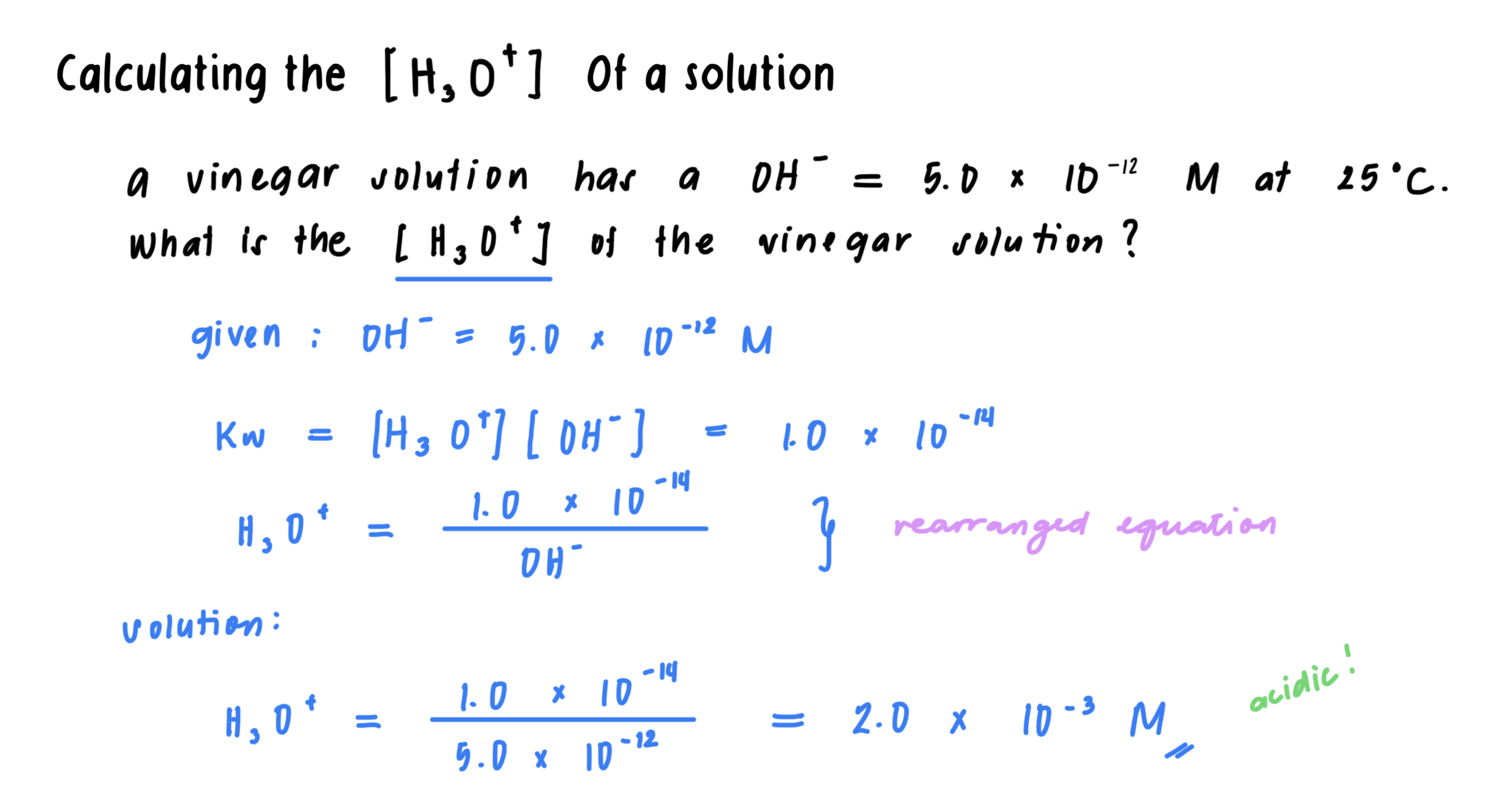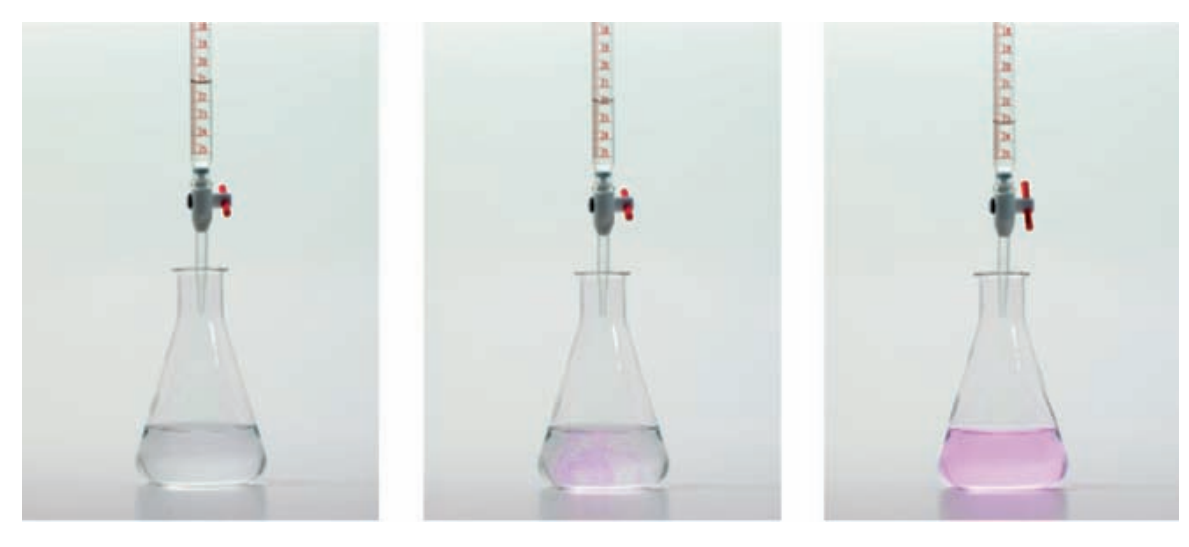Chapter 10: Acids and Bases and Equilibrium
10.1: Acids and Bases
Acids
- Arrhenius Acids: Substances that produce hydrogen ions when they dissolve in water.
- Because acids produce ions in water, they are also electrolytes.
- Svante Arrhenius — A Swedish chemist to first describe acids.
Naming Acids
- When an acid dissolves in water to produce a hydrogen ion and a simple nonmetal anion, the prefix hydro– is used before the name of the nonmetal, and its –ide ending is changed to –ic acid.
- Ex.: Hydrochloric acid, hydrobromic acid and hydrocyanic acid
- The most common form of an oxygen-containing acid has a name that ends with –ic acid.
- The name of its polyatomic anion ends in –ate.
- Ex.: Sulfate, carbonate, acetate and phosphate
- An acid that contains one less oxygen atom than the common form is named as an –ous acid.
- Ex.: Phosphorous acid, sulfurous acid, and chlorous acid.
- The name of its polyatomic anion ends with –ite.
- Ex.: Sulfite, nitrite, phosphite, and chlorite.
Bases
- Arrhenius Bases: These are ionic compounds that dissociate into metal ions and hydroxide ions when they dissolve in water. These bases are considered electrolytes as well.
- Most Arrhhenius bases are formed from Group 1A and Group 2A metals.
Naming Bases
- Typical Arrhenius bases are named as hydroxides.
- Lithium Hydroxide
- Sodium Hydroxide
- Potassium Hydroxide
- Calcium Hydroxide
- Aluminum Hydroxide
Brønsted–Lowry Acids and Bases
- J. N. Brønsted and T. M. Lowry — They expanded the definition of acids and bases in 1923.
- Brønsted–Lowry acid: It can donate a hydrogen ion to another substance.
- Brønsted–Lowry base: It can accept hydrogen ion.
Conjugate Acid–Base Pairs
- According to the Brønsted–Lowry theory, a conjugate acid–base pair consists of molecules or ions related by the loss of one H+ by an acid, and the gain of one H+ by a base.
- Amphoteric: Substances that can act as acids and bases.
10.2: Strengths of Acids and Bases
- The strength of an acid is determined by the moles of H3O+ that are produced for each mole of acid that dissolves.
- The strength of a base is determined by the moles of OH- that are produced for each mole of base that dissolves.
- Strong acids: These are examples of strong electrolytes because they donate H+ so easily that their ionization in water is virtually complete.
- Weak Acids: These are weak electrolytes because they ionize slightly in water, which produces only a few ions.
- Diprotic Acid: Carbonic acid that has two H+, which ionize one at a time
- Strong Bases: These are ionic compounds that dissociate in water to give an aqueous solution of metal ions and hydroxide ions.
- Weak Bases: These are weak electrolytes that are poor acceptors of hydrogen ions and produce very few ions in solution.
10.3: Acid-Base Equilibrium
- Equilibrium: The rates of the forward and reverse reactions become equal.
- The reactants form products at the same rate that the products form reactants.
- It has been reached when no further change takes place in the concentrations of the reactants and products.
- Le Châtelier’s principle: It states that when equilibrium is disturbed, the rates of the forward and reverse reactions change to relieve that stress and reestablish equilibrium.
10.4: Ionization of Water
In pure water, a few water molecules transfer H+ to other water molecules, producing small, but equal, amounts of H3O+ and OH-.
In pure water, the molar concentrations of H3O+ and OH- are each 1.0 x 10^-7 M.
The ion product constant for water:

In acidic solutions, the [H3O+] is greater than the [OH-].
In basic solutions, the [OH-] is greater than the [H3O+].

10.5: The pH Scale
- pH Scale: A range of numbers typically from 0 to 14, which represents the [H3O+] of the solution.
- A neutral solution has a pH of 7.0.
- In acidic solutions, the pH is below 7.0.
- In basic solutions, the pH is above 7.0.
- Mathematically, pH is the negative logarithm of the hydronium ion concentration, pH = –log [H3O+].
10.6: Reactions of Acid and Bases
- Salt: An ionic compound that does not have H+ as the cation or OH- as the anion.
- Acids react with certain metals to produce hydrogen gas and salt.
- Metals that react with acids include potassium, sodium, calcium, magnesium, aluminum, zinc, iron, and tin.
- When an acid is added to a carbonate or bicarbonate, the products are carbon dioxide gas, water, and an ionic compound.
- Neutralization: A reaction between an acid and a base to produce water and salt.
- Titration: A laboratory procedure in which we neutralize an acid sample with a known amount of base.
- In the titration, we neutralize the acid by adding a volume of base that contains a matching number of moles of OH-.
- We know that neutralization has taken place when the phenolphthalein in the solution changes from colorless to pink. This is called the neutralization endpoint.
- From the volume added and molarity of the NaOH solution, we can calculate the number of moles of NaOH, the moles of acid, and then the concentration of the acid.

- Antacids: These are substances used to neutralize excess stomach acid.
10.7: Buffers
- Buffer Solution: It maintains pH by neutralizing small amounts of added acid or base.
- A buffer contains either a weak acid and its salt or a weak base and its salt.
- When an acid or base is added to a buffer solution, there is little change in pH.
- Acidosis: A condition that occurs when there’s an increase in the CO2 level that leads to a low blood pH concentration.
- Alkalosis: A condition that occurs when there’s a decrease in the CO2 level that leads to a high blood pH concentration.